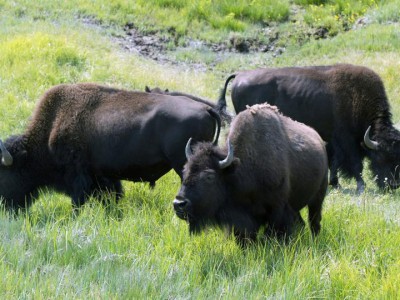What’s Up with Beef?
Friday, 9 September 2011
This post is also available in: Indonesian
Initiative from Agriculture Minister Suswono to conduct cattle census with the Central Statistics Agency should be appreciated. At least the data generated from the census opened a new chapter in the cattle industry in Indonesia. It also serves as a strong foundation for the development of further policies regarding domestic cattle production increase for the achievement of beef self-sufficiency target in 2014.
As written in the 2014 beef self-sufficiency blueprint, the target is to achieve a population of 14.23 million cattle with an annual domestic beef production capacity 420,200 tons. That way, beef import is only 32,000 tons.
To achieve that, a budget of Rp 10.65 trillion rupiahs is needed for the next five years. In the pessimistic scenario, the budget needed is Rp 2.24 trillion, while in the optimistic scenario the program needs Rp 20 trillion.
Beyond expectations, census by the Central Statistics Agency records the cattle population to be 14.8 million heads. This is far above the cattle population estimation for 2009 which is 12.6 million heads.
Moreover, the cattle population in 2010 is 14.8 million heads, far above the target in the blueprint. Based on the cattle population alone, ideally Indonesia could achieve beef self-sufficiency this year.
So the previously projected Rp 10.65 trillion budget is no longer needed. Realizing the need for amendment, Suswono held a meeting to re-discuss the beef self-sufficiency blueprint for 2014.
Further need for re-discussion is the fact that until December 2010, Indonesia has imported 120,000 tons of meat and offal and 650,000 heads of feeder cattle.
Beef and cattle import in 2010 could be understood because census data was announced in September 2011 and so is the release of beef import permits in 2011 until August. But, if for September 2011 the government is still allocating 28,000 tons of additional beef import, where 7,000 of it is for January 2012, then that decision is hard to accept.
The Ministry of Agriculture has set self-sufficiency targets for five food commodities, which are rice, corn, soybean, sugar, and beef. Among the five commodities, beef provides the least challenge.
First, increasing beef productivity does not face land problems. So far the main challenge in rice, corn, soybean, and sugar production is land.
Land competition among the four crops is very tight because all four could be planted in the same type of land. When rice price is high, for example, corn, soybean, or sugarcane farmers convert to rice. Similarly, when the price of corn, soybean, or sugarcane increase, farmers will convert from rice to the more profitable crop.
Not to mention the attraction of other crop commodities, such as chili peppers and shallots. This fierce competition has made rice, corn, soybean, and sugarcane production difficult. Not to mention uncontrollable land conversion.
Players in the cattle farming sector are all prepared. Feeding lot companies are ready to increase their production because so far they production is far from optimum.
Farming cooperatives are also growing. People are already used to caring for cattle since the times for their ancestors. Indonesia also has good cattle breeds, which could increase the effectiveness of artificial insemination. (HERMAS E PRABOWO)
Source : Kompas

 English
English Indonesia
Indonesia 





